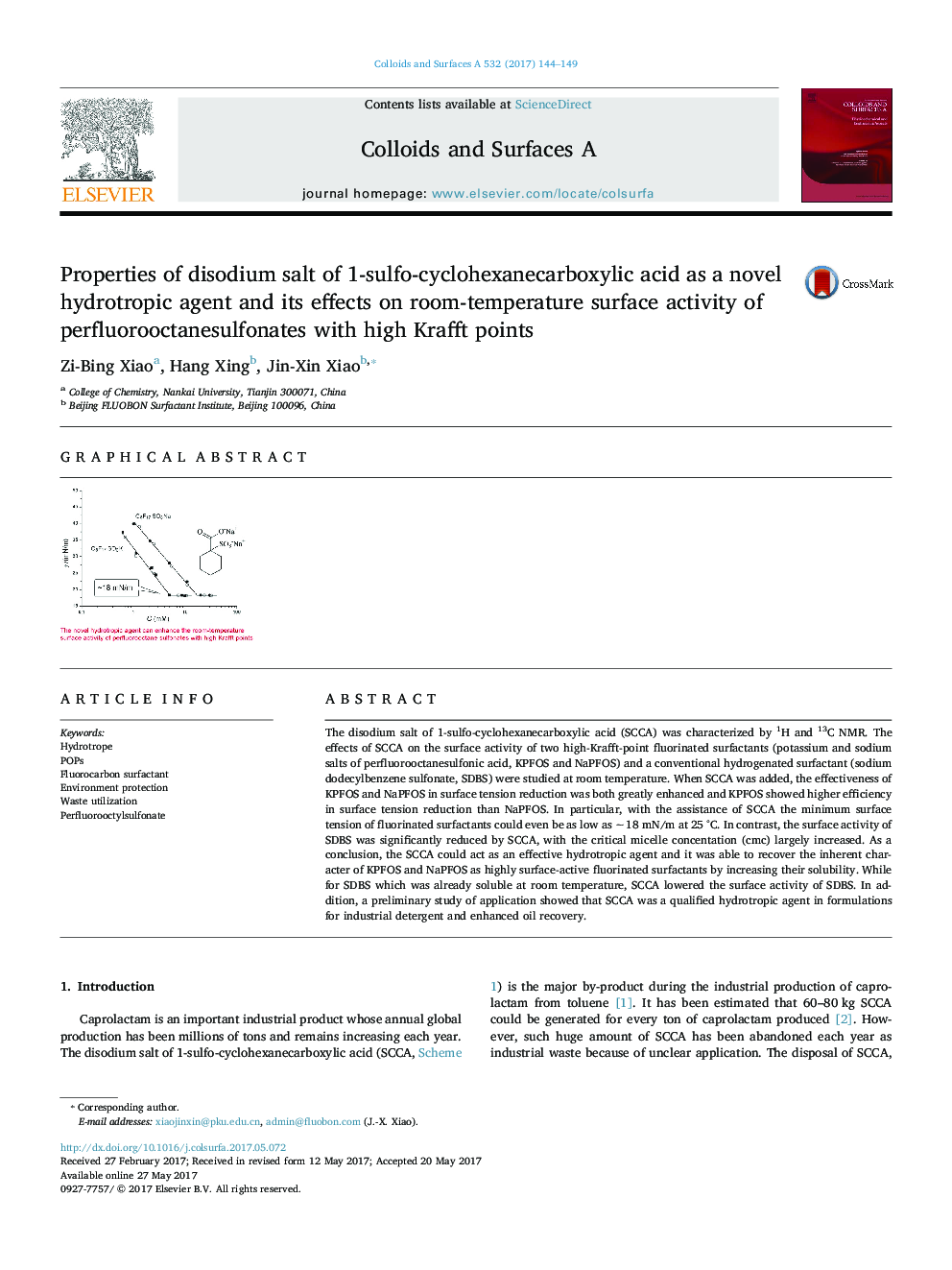| Article ID | Journal | Published Year | Pages | File Type |
|---|---|---|---|---|
| 4981759 | Colloids and Surfaces A: Physicochemical and Engineering Aspects | 2017 | 6 Pages |
â¢The by-product of caprolactam is applied as a novel hydrotropic agent.â¢It's highly effective in inhibiting aggregation and crystallization of surfactants.â¢High-Krafft-point fluorinated surfactants become applicable at room temperature.â¢Low surface tension â¼18 mN/m is reached for poorly soluble fluorinated surfactants.
The disodium salt of 1-sulfo-cyclohexanecarboxylic acid (SCCA) was characterized by 1H and 13C NMR. The effects of SCCA on the surface activity of two high-Krafft-point fluorinated surfactants (potassium and sodium salts of perfluorooctanesulfonic acid, KPFOS and NaPFOS) and a conventional hydrogenated surfactant (sodium dodecylbenzene sulfonate, SDBS) were studied at room temperature. When SCCA was added, the effectiveness of KPFOS and NaPFOS in surface tension reduction was both greatly enhanced and KPFOS showed higher efficiency in surface tension reduction than NaPFOS. In particular, with the assistance of SCCA the minimum surface tension of fluorinated surfactants could even be as low as â¼18 mN/m at 25 °C. In contrast, the surface activity of SDBS was significantly reduced by SCCA, with the critical micelle concentation (cmc) largely increased. As a conclusion, the SCCA could act as an effective hydrotropic agent and it was able to recover the inherent character of KPFOS and NaPFOS as highly surface-active fluorinated surfactants by increasing their solubility. While for SDBS which was already soluble at room temperature, SCCA lowered the surface activity of SDBS. In addition, a preliminary study of application showed that SCCA was a qualified hydrotropic agent in formulations for industrial detergent and enhanced oil recovery.
Graphical abstractDownload high-res image (98KB)Download full-size image
